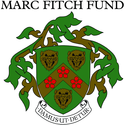Creswell Heritage Area Digital Archive, 1874-2018
Rogan Jenkinson, 2023. https://doi.org/10.5284/1105599. How to cite using this DOI
Data copyright © Rogan Jenkinson unless otherwise stated
This work is licensed under a Creative Commons Attribution 4.0 International License.
Primary contact
Archaeology Data Service
Dept. of Archaeology
The King's Manor
University of York
Y01 7EP
UK
Tel: +44 (0)1904 323954
Resource identifiers
- ADS Collection: 5107
- DOI:https://doi.org/10.5284/1105599
- How to cite using this DOI
| Object ID | 2240530 | |
|---|---|---|
| Object Title | Stratigraphic Distribution and Description of “Early Upper Palaeolithic” Invasively Retouched Artifacts | |
| File name | IN-44.csv | |
|---|---|---|
| Format | CSV | |
| Format Type | Comma Separated Values | |
| Checksum | aebb26972e097eb7bb7dc66f0171c189 | |
| Created | 01-Jan-2018 | |
| Last Modified | 06-Dec-2022 | |
| File size | 1 Kb | |
| Download | ||
| Spreadsheet title | Stratigraphic Distribution and Description of “Early Upper Palaeolithic” Invasively Retouched Artifacts | |
|---|---|---|
| Spreadsheet description | The stratigraphic distribution of 72 artifacts is described in the spreadsheet. Their typology suggested to Armstrong that they were similar to European Middle Palaeolithic (Mousterian} assemblages and further studies by John Campbell in 1977 have refered to them as the Early Upper Palaeolithic within the UK .It is now clear that the style of invasive retouch and artifact form are more similar to the LRJ (Lincombian-Ranisian-Jeromanowician} assemblages known from Eastern Europe where they are thought to be the work of Neanderthal groups and therefore of Middle Palaeolithic age. Their context within Pin Hole Cave is not well understood despite the fact that the assemblage has stratigraphic integrity they occur on top of a major hiatus in sedimentation that separates them from the lower Middle Palaeolithic (Later Middle Palaeolithic in the UK} assemblage. Despite several studies, their age within the cave is not known. Artifacts from this assemblage are entirely of flint and display sophisticated fabrication.(72 items} | |
Associated Metadata:
| Spreadsheet metadata - Pin Hole Cave Archaeological and Paleontological Remains | 257 Kb | |
| Spreadsheet metadata - lithics worked bone artefacts | CSV | 8 Kb |





